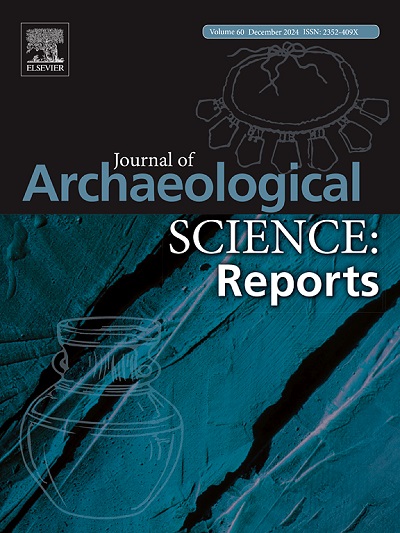Non-invasive characterization of the manufacturing process of a Nuragic bronze statuette: a Neutron Imaging study
IF 1.5
2区 历史学
0 ARCHAEOLOGY
引用次数: 0
Abstract
The Nuragic civilization (Sardinia, Italy, XVIII–VIII Cen. B.C) developed a flourishing bronze metallurgy. The production of Nuragic bronze figurines from Sardinia represents a rich historical archive that provides key information about the iconography, the metal production and casting techniques, and on the development of metallurgy in the Mediterranean basin. Since the question about their manufacturing method remains without definitive answer, the understanding of the Sardinian bronze metallurgy is essential to determine which manufacturing techniques were employed to produce complex bronze artefacts. In the frame of a wider research project relating to Nuragic bronzes, four artefacts, three anthropomorphic statuettes (a warrior, a priestess, and an offering figure), and one miniature of a basket, were made available by Museo Nazionale Preistorico “L. Pigorini” (Roma, IT). In this work we present the results of the analyses conducted on a bronze figurine depicting an iconic type of Nuragic figure: the Priestess. The analysis was performed using White Beam Neutron Tomography (NT) and Bragg Edge Neutron Transmission (BENT) at the Paul Scherrer Institut (PSI) (Villigen, CH). Neutron techniques are nowadays the only available approach for revealing, non-destructively and with good spatial resolution, the morphological and microstructural properties within the whole volume of solid cast metallic artefacts such as this bronze statuette. This work presents the result of a non-invasive analytical investigation on an archaeological bronze artefact, providing outstanding results: from a quantitative analysis of the composition to an in-depth morphological and microstructural analysis capable of unveiling details on the ancient casting methods of the statuette.
努拉契克青铜雕像制造过程的非侵入性特征:中子成像研究
努拉契克文明(意大利撒丁岛,公元前十八至十八世纪)发展了繁荣的青铜冶金业。撒丁岛出土的努拉基奇青铜雕像代表了丰富的历史档案,提供了有关雕像、金属生产和铸造技术以及地中海盆地冶金发展的重要信息。由于有关其制造方法的问题仍然没有明确答案,因此了解撒丁岛青铜冶金技术对于确定采用何种制造技术来生产复杂的青铜器至关重要。在有关努拉青铜器的更广泛的研究项目框架内,"L. Pigorini "国家史前博物馆(罗马,意大利)提供了四件文物,其中三件是拟人雕像(战士、女祭司和祭品),一件是篮子的缩影。在这项工作中,我们介绍了对一个青铜雕像进行分析的结果,该雕像描绘的是努拉契奇的一种标志性人物:女祭司。分析是在保罗-舍勒研究所(PSI)(瑞士维利根)使用白光中子断层扫描(NT)和布拉格边缘中子透射(BENT)技术进行的。中子技术是目前唯一能以非破坏性和良好的空间分辨率揭示固体铸造金属文物(如这尊青铜雕像)整个体积内的形态和微观结构特性的方法。这项工作展示了对一件考古青铜器进行非侵入式分析调查的结果,提供了杰出的成果:从成分的定量分析到深入的形态和微观结构分析,能够揭示古代铜像铸造方法的细节。
本文章由计算机程序翻译,如有差异,请以英文原文为准。
求助全文
约1分钟内获得全文
求助全文
来源期刊

Journal of Archaeological Science-Reports
ARCHAEOLOGY-
CiteScore
3.10
自引率
12.50%
发文量
405
期刊介绍:
Journal of Archaeological Science: Reports is aimed at archaeologists and scientists engaged with the application of scientific techniques and methodologies to all areas of archaeology. The journal focuses on the results of the application of scientific methods to archaeological problems and debates. It will provide a forum for reviews and scientific debate of issues in scientific archaeology and their impact in the wider subject. Journal of Archaeological Science: Reports will publish papers of excellent archaeological science, with regional or wider interest. This will include case studies, reviews and short papers where an established scientific technique sheds light on archaeological questions and debates.
 求助内容:
求助内容: 应助结果提醒方式:
应助结果提醒方式:


